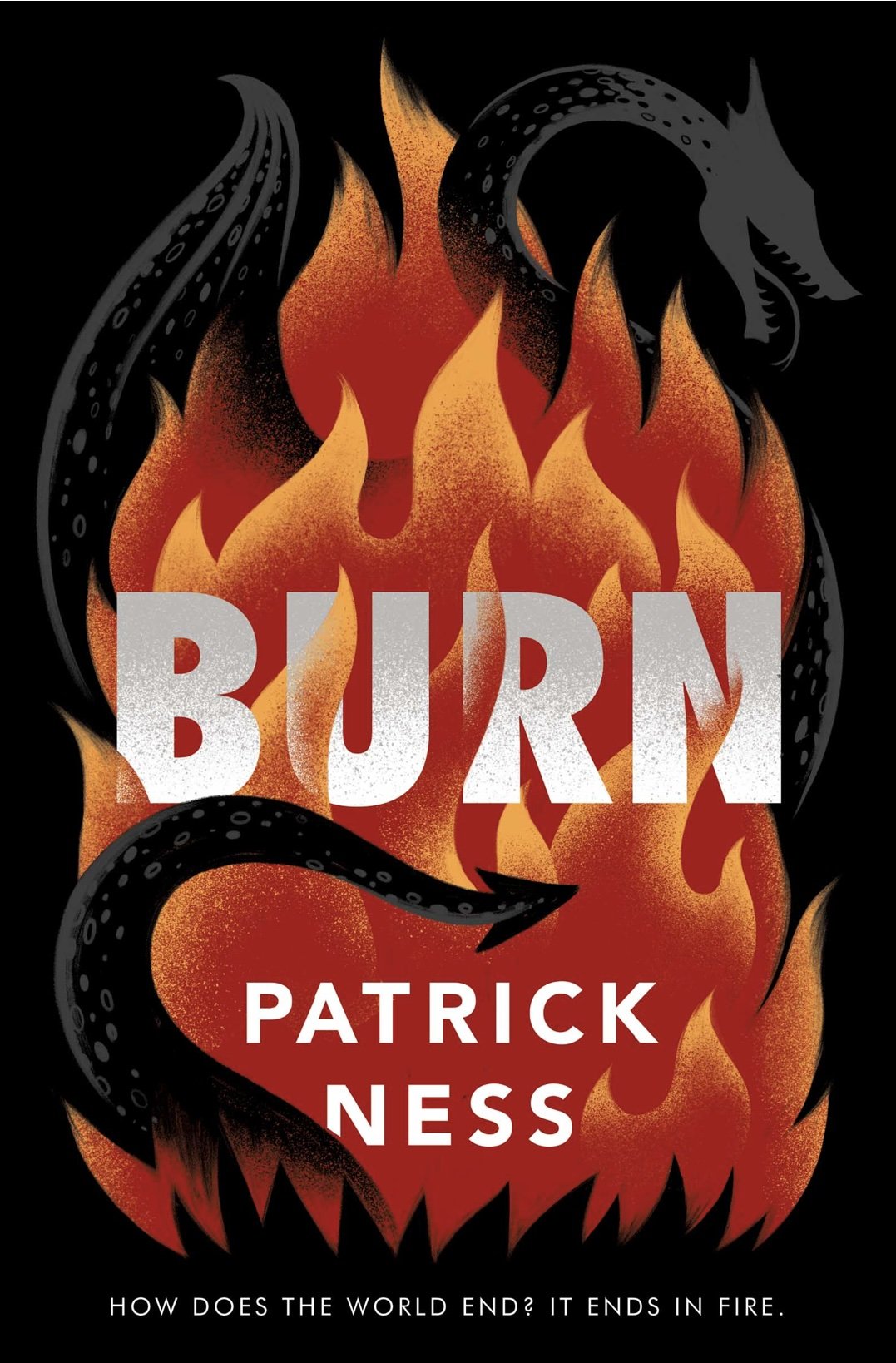Border-crossings of Many Kinds in Burn by Patrick Ness
“The enforcers of law in Canada and the United States sometimes coated their bullets in anti-coagulant. Not for when they shot men. For when they shot dragons.”
Set in the Pacific Northwest, Ness’s YA novel Burn takes readers back and forth across the border between countries. But it also crosses the borders between worlds—parallel universes of possibilities playing out in the lives of the characters. Ness plays as well with the real history of 1957, employing the Cold War and the Soviets, Japanese internment and the spectre of nuclear annihilation. Then he twists the real past into fantasy with the addition of goddesses and dragons.
One dragon in particular, known to the humans as a Russian blue, becomes humanized for us with a name. Kazimir. What a name that is! Worthy of the character who bears it.
From the opening in which Sarah Dewhurst’s dad hires the dragon to help on the farm (dragons being cheaper than human farmhands) there’s no uncertainty about the nature of this story’s ingredients. There’s a prophecy that involves a deadly assassin, a cult of dragon worshippers, two FBI agents, Sarah herself, who is biracial, with a Black mother and a white father, and Jason, the Japanese American boy Sarah’s growing fond of. Reality and imagined worlds thread together to create a novel that raises questions about our very real world.
“My favorite thing about (Sarah Dewhurst) is my favorite thing about all teens…they have a kind of sticktoitiveness that we never give them credit for. ”
In less competent hands quite so many ingredients might well have turned out to be a recipe for confusion. Ness avoids this by avoiding authorial tricks. The story plays in clearly drawn scenes, shifting cinematically from one character to another, keeping to the viewpoint in each, placing effective markers of setting and time, foreshadowing events to come. There’s blood and gore aplenty, breathtaking surprises, but also humanity. Assassination plot and first love grow and shift and change, side by side. The narrative uses the 1950’s setting to take on war, violence toward women, and prejudice against homosexuality, even while those who breach these barriers create others of their own.
Patrick Ness says in this Booktopia interview, “My favorite thing about (Sarah Dewhurst) is my favorite thing about all teens…they have a kind of sticktoitiveness that we never give them credit for. Lots of tough things have happened and they have very little money and she has parents who are of different races, which is difficult in 1957 America, but she just carries on.”
This creation of illusion we call fiction writing is a human act. In the end, dragons and goddesses give readers of Burn a way to think about—who else?—humans. The messes we make. The beauty we are capable of seeing.
